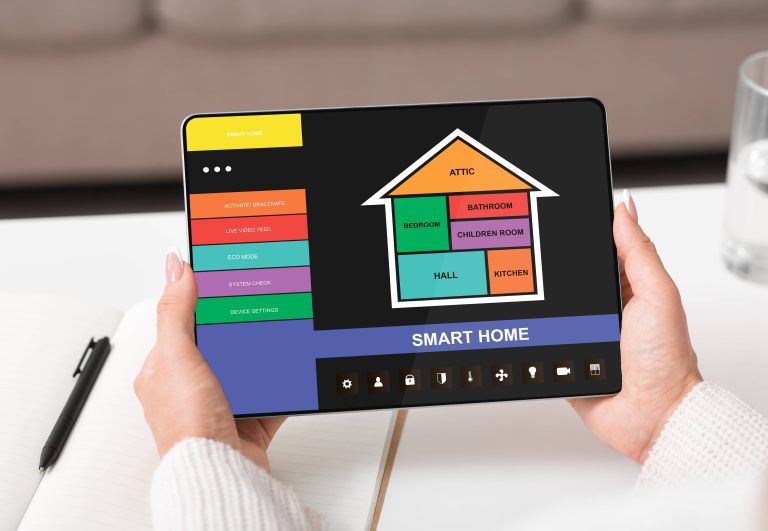
In today’s world, energy efficiency and sustainability have become focal points for households around the globe. As utility bills rise and environmental concerns become more pressing, many turn to smart home technology to mitigate costs and reduce their carbon footprints. But how exactly can smart homes help reduce your energy bill? This comprehensive guide explores the various ways in which intelligent home systems can lead to significant savings and promote sustainable living.
Understanding Smart Home Technology
Smart home technology encompasses various devices and systems connected through the internet, allowing users to control aspects of their home environment remotely or automatically. From thermostats and lighting to security systems and appliances, smart home devices offer unprecedented control, convenience, and efficiency. By leveraging data and automation, these technologies can optimize energy consumption, avoid wastage, and ultimately reduce utility expenses.
Smart Thermostats: Precision Heating and Cooling
One of the most significant energy hogs in any home is the heating, ventilation, and air conditioning (HVAC) system. Traditional thermostats often lead to energy wastage due to their lack of precision and adaptability. Here’s where smart thermostats come into play. Devices like the Nest Learning Thermostat or the Ecobee Smart Thermostat use sensors, algorithms, and even external weather data to optimize your home’s heating and cooling efficiently.
Smart thermostats learn your schedule and preferences, adjusting the temperature accordingly to ensure comfort when you’re home and energy savings when you’re not. For instance, you can set the system to lower the temperature during the winter nights and raise it just before you wake up. These slight adjustments can result in energy savings of up to 10-12% on heating and 15% on cooling bills annually, according to various studies.
Smart Lighting Systems: Intelligent Illumination
Lighting accounts for a substantial portion of energy usage within a home. Traditional light bulbs, especially incandescent ones, are inefficient and can lead to high electricity costs. Smart lighting systems, on the other hand, provide a plethora of options to reduce energy consumption. By switching to LED bulbs with smart capabilities, such as those offered by Philips Hue or LIFX, homeowners can enjoy a range of benefits.
Smart lighting systems allow users to control lights remotely through a smartphone app, set schedules, and utilize motion detectors to ensure lights are only on when needed. Dimming capabilities and customizable lighting scenes further enhance energy efficiency. Imagine your outdoor lights automatically turning off at dawn or your living room lights dimming to 50% brightness after 10 PM. These intelligent adjustments can substantially lower your electricity bill and extend the lifespan of your bulbs.
Energy Monitoring and Management
One of the key advantages of smart home technology is the ability to monitor and manage energy usage in real time. Smart meters and home energy management systems, such as Sense or the Smappee Energy Monitor, provide detailed insights into energy consumption patterns. These devices can track the usage of individual appliances, allowing you to identify energy hogs and make informed decisions on how to reduce consumption.
For further optimization, integrating smart plugs can help manage the energy usage of plugged-in devices. Smart plugs can be scheduled to turn off appliances like coffee makers, gaming consoles, and TVs when they’re not in use, preventing phantom energy draw. Over time, small changes like these accumulate, leading to noticeable reductions in your energy bill.
Smart Appliances: Efficient Operation
Household appliances such as refrigerators, washing machines, and dishwashers are essential to daily life but consume substantial amounts of energy. Smart appliances are designed with efficiency in mind, utilizing advanced technology to achieve optimal performance while minimizing energy usage. For instance, smart refrigerators can adjust their cooling patterns based on usage patterns and defrost cycles more efficiently. Smart washing machines and dishwashers can be scheduled to run during off-peak energy hours or use lower temperature settings when less intensive washing is required.
Energy Star-rated smart appliances not only use less energy but also provide users with notifications and reports on their energy consumption, further encouraging energy-conscious behavior. By investing in smart appliances, homeowners can enjoy reduced energy bills and contribute to a greener environment.
Integrating Renewable Energy Sources
A truly sustainable smart home goes beyond optimized energy usage by incorporating renewable energy sources like solar panels. Solar energy systems, when paired with smart home technology, offer dynamic solutions for reducing dependency on the grid and lowering energy costs. Smart inverters and battery storage systems can manage and store the energy generated, providing power during peak times or outages.
Moreover, integrating smart water heating systems with solar power can heat water efficiently without relying entirely on electricity from the grid. These systems can be controlled remotely, ensuring that hot water is available when needed and stored efficiently when not in use. By leveraging renewable energy, homeowners can significantly cut their energy bills while fostering a sustainable future.
Conclusion
Smart homes offer myriad ways to enhance energy efficiency and reduce energy bills, from precision heating and cooling with smart thermostats to intelligent lighting and connected appliances. By utilizing energy monitoring tools and integrating renewable energy sources, homeowners can achieve substantial savings and minimize their environmental impact. As technology advances, the potential for smart homes to contribute to a more sustainable and cost-effective lifestyle will only continue to grow.
Investing in smart home technology is not just a step towards lower energy bills but also a commitment to sustainable living. By making these intelligent choices, we can contribute to a more energy-efficient future, one smart home at a time.







